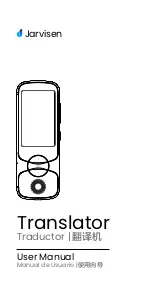
KB3 Programs
KB3 Mode Buttons
D-3
Chorus/Vibrato Depth
This parameter determines how much of the effect is applied to the KB3 sounds. There are
two levels of both Chorus and Vibrato available, depending on the setting for the Chor/Vib
button.
Percussion
Percussion is a characteristic feature of tone wheel organs. It’s especially useful while soloing,
since percussion adds an extra plink (actually an extra tone at a defined harmonic) to the
attack of individual notes. When you play more than one note simultaneously, only the first
note you play will trigger the envelope of the percussion tone, though notes played shortly
afterwards will also be affected by this envelope. When you play chords, all of the notes
played simultaneously will get the percussive effect (provided percussion hasn’t already been
triggered.)
Percussion On/Off
This is where you turn the percussion effect on or off. Percussion is created by a decaying
envelope applied to one of the nine drawbars (usually the 4th drawbar for the low pitch and
the 5th drawbar for the high pitch. The highest drawbar is normally stolen to generate the
percussion sound). The percussion effect is “single-triggered”, which means that once it’s
triggered, it won’t trigger again until all keys go up.
The KB3 engine in the Forte is capable of generating the Percussion effect without stealing
any of the drawbars, and while not authentic, is occasionally used on Forte Programs.
Percussion Loud/Soft
This parameter switches between loud and soft percussion settings.
Percussion Decay F/S
This parameter switches between fast and slow percussion settings.
Percussion Pitch H/L
This parameter switches between high and low harmonic percussion settings.
KeyClick
The Key Click feature adds a decaying burst of pitched noise to the attack of notes. Unlike
the percussion, the key click is “multi-triggered”, which means that every new note will
trigger it.
This button controls whether the Key Click parameter is switched on or off.
















































